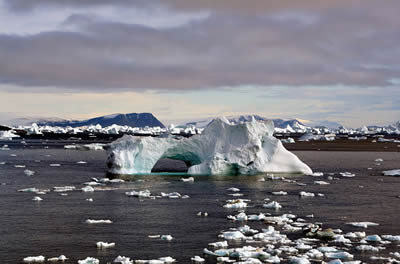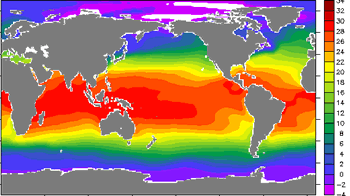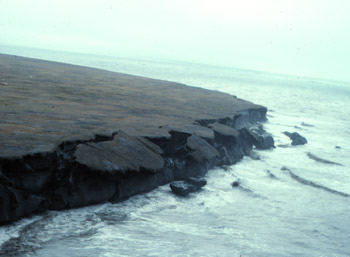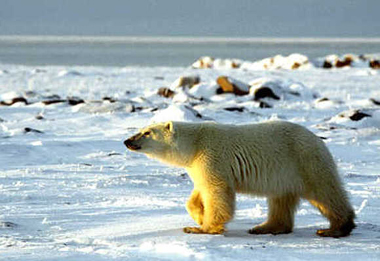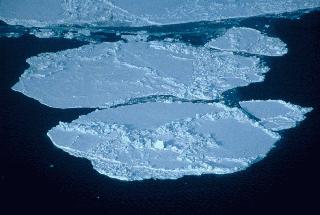Click on image for full size
Image courtesy of Mila Zinkova, Creative Commons Attribution ShareAlike license
Greenland’s Ice Is Melting Faster
Greenland, the enormous island – the world’s largest- that sits between the Arctic and Atlantic Oceans, is almost entirely covered with ice. A massive ice sheet blankets about 80% of the land surface. As our planet warms, Greenland’s ice is melting. The ice sheet is getting thinner and the slowly flowing ice is moving towards the ocean. Recent research has found that the rate of the ice melt has been speeding up.
Earth’s warming climate means that overall Greenland looses more ice than it gains each year. The amount of ice melt during the summer of 2007 was the largest since scientists first started making satellite measurements of the ice in 1979. According to climate scientist Konrad Steffen, the amount of ice Greenland lost in 2007 was “the equivalent of two times all the ice in the Alps, or a layer of water more than one-half mile deep covering Washington, D.C." The rate of ice melt in the western part of Greenland has sped up by about 30% since 1979.
Konrad Steffen and his research team at the University of Colorado monitor Greenland’s ice in a variety of ways. From far above, satellites equipped with microwave sensors collect data that allow the team to chart the area of melt, understand how the ice sheet is thinning, and to figure out how fast the ice is moving towards the ocean. On Greenland’s ice, monitoring stations collect data every hour about ice sheet processes. Plus the team investigates the top of the ice sheet through helicopter surveys. Sophisticated cameras and a rotating laser helps the team map the volume and shape of tunnels called moulins.
Better understanding moulins, vertical tunnels through the ice that drain melt water down below the ice sheet, may be key to understanding the rate at which Greenland’s ice is diminishing. "We know the number of moulins is increasing," said Steffen. "The bigger question is how much water is reaching the bed of the ice sheet, and how quickly it gets there."
Why is the amount of water at the bottom of the ice sheet important? The melt water draining to the bottom of the ice through moulins causes the ice to slip more quickly towards the ocean - a bit like slipping on a banana peel. Outlet glaciers, the routes that ice takes towards the sea, are moving more quickly now than they were in the past. For example, a large outlet glacier on the west side of Greenland, called the Jacobshavn Glacier, has nearly doubled its speed in the last decade. The flow velocity of other glaciers has increased by up to 50% during the summer melt period.
The Arctic is warming more rapidly than other regions. For example, while Earth’s average temperature has increased by 1 degree Fahrenheit over the past century, air temperatures in Greenland have increased by about 7 degrees Fahrenheit since 1991. Because warming is more rapid in the Arctic, the impacts are much more pronounced. Greenland’s accelerating rate of ice melt is one of many major changes in the region. The amount of sea ice in the Arctic Ocean has been decreasing in recent decades, with an especially steep decline in 2007. Permafrost in Arctic tundra has been thawing rapidly too. And warming is causing changes to Arctic ecosystems.
When Greenland’s ice melts, the water is added to the ocean, causing sea level to rise. Sea level also rises when icebergs calve off a glacier into the ocean. If all the ice that is on Greenland were to melt or calve into the ocean, global sea level would rise 7.2 meters (21 feet.) Currently, melting Greenland ice increases global sea level by about 0.5 millimeters each year. If the ice melts faster, then sea level will rise faster. A better understanding of how Greenland’s ice is changing will help us understand more about how sea level will change in the future.


